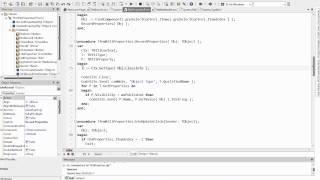
Mixing at unity on consoles; is this the right way?
Комментарии:

Hate to be the one to tell you I don’t know who you are. I don’t know what you do but there’s 1000 professional audio engineers out mixing at unity everywhere you go and I think you’re a fool. I don’t have a clue what you’re talking about.
Ответить
you are and utterly completely wrong about what you’re saying here on this channel and about unity game theatres to zero giving up your channel you move your view make sure show on your faders. There’s plenty of input to give you plus or minus 5DB you don’t have a clue what you’re talking about and you’re just another fool
Ответить
This video is fundamentally wrong,
the board is designed to sound best at unity
Of course youre not going to mix a whole show with your gains but that doesnt mean youre not supposed to get the faders to 0 (where they sound the best).
Show up to any national show and do this crap and youll get laughed at

Ughhh
Ответить
I started my journey at church in high school over 20 years ago. Never in my life have I ever known that unity mixing was a thing. Without proper training, i very quickly realized that gain adjustments was/is very finite. I always run faders, except to make louder adjustments as needed for initial setup
Ответить
what is the correct way to use gain and volume fader for a live band? im using rockford mixer
Ответить
It is called unity gain structure, not unity mixing. Know the difference. I don't know of a manufacturer that suggests that a show is mixed using the preamp gain knob. Unit gain structure does however allow each microphone to receive the correct amount of gain for that particular mic in that particular system venue setup. After the correct gain for each mic has been set via unity gain, the so-called, engineer is free to slide the faders to their hearts content and mix as how they desire. Occasionally a (again, so-called engineer) might have to go back to the top at the input gain and make an adjustment that reflects changing environment on stage but this is not called unity mixing. I'm older than dirt and back in the day there was no variable gain knob. Gain was preset and it was a problem for low output mics such as an SM57. Next came a 3 position gain switch that gave 3 levels of gain and finally a variable gain pot. Being able to use just the right amount of gain and avoid the noise floor is critical. Not setting the master fader to unity and the channel fader to unity and then setting the correct amount of gain will introduce excessive gain (noise) into the signal. EG. if the ch fader is set to 50% and the master is set to 50% then the input gain needs to be set much higher (noise) than needed and also input distortion will occur. Again, it's called "Unity Gain Structure" not unity mixing. Know the difference. BTW, we used to have to make our own mixing consoles as you could not just buy one off the shelf. The Monterey Pop Festival was mixed on a mixer made just for the concert. The host of this video might be better serving teaching how to get the musicians (with amps) to not turn their amp up when the so-called sound engineer turns the level down for that musician.
Ответить
It's 2022 and I just came across this great video. Thanks, SLA...
Assuming you're using passive speakers, how should you set volumes on the Amps?

Mixing at unity is dumb, even more dumb when you do monitors from FOH…
Ответить
The only problem with the setup up you are talking about is the constant changing of the GAIN. Which is not good at all
This is what I do..
Tell me if it is wrong..
(If mixing a new band)
1. Turn all GAINS all the way Down,
2. Put L/R(MAINS) fader to Unity Gain
3. Put ALL FADERS to Unity gain
Except stereo channels with No Gain/Trim
4. I get each singer/musician (One at a time) to PERFORM at or Close to the LEVEL as if it was Live.
(NOT TALKING INTO THE MIC)
4. I THEN adjust GAIN with PFL/SOLO engaged (on the INDIVIDUAL channel I am adjusting AT THE TIME) to make sure I'm getting a strong signal on the meter.
i.e. I Turn Solo on for Ch. 1 then Adjust Gain, then Turn SOLO/PFL off Then Repeat for the next channel.
-18dB to 0dB depending on what board you are using.
5. Then I Do a Pre Sound check with NO Monitors. ADJUSTING GAIN ONLY, Keeping All faders at Unity Gain.
THEN I NEVER touch the gains again. (Unless a mic is swapped)
6. Only then Do I Adjust their monitor mixes
7. Do a Final Sound Check with FOH & MONITORS.
8. AT THIS POINT
If I need more volume,
I can move the fader up to at least +5dB
Or if something is too loud I can bring it down to -5dB or more.
Basically, after my final Sound check most of my faders sit between +5dB & -5bB. Because some songs are more intense than others.
Is that a decent way to do it. If not
It would be nice if you did a video showing the beginning to end setup process in another video
Thanks

True
Ответить
First off this suggests that people are quite commonly simply adjusting gain for their mix. And while doing so does adjust everything after, I think your explanation missed a key point. That being, how to use it correctly.
You start with a given channels fader at Unity, then adjust gain (gain before feedback). From there, you adjust the fader relative to the rest of the mix. I have never seen anyone use the gain to adjust their mix as you have described.
I train people to use Mixers, and there is a very simple explanation. Gain is NOT volume. They are not the same thing and the gain and fader serve two different purposes.
If you have an input that is not "loud enough", outside of being to far from the mic, I would suggest checking that your gain and gain structure was set correctly in the first place.
If gain structure is set correctly at the beginning, very few if any changes are necessary afterwards to the gain

I have a literally never seen anybody ever do it that way.
Ответить
You're right that technically you should use your gain knobs to get input levels and then use your faders to adjust the level in the main mix. However you're explanation of why you shouldn't set your mix via the gain knobs with faders at zero is incorrect. When someone mixes at unity, theyr getting the front of house mix with the gain knobs. You dial that in as a band or group is playing and get it as close to perfect as possible. Now, after thats done, you won't be touching the gain knobs again.. then you can setup your monitor mixes. At that point if there's any slight adjustment that needs to be made, like a guitar solo needs to come up for a minute or so, you can adjust it on the faders. The 2 benefits of unity mixing, is that when that solo is done, you know exactly where that fader needs to go back to....unity. also if some one bumps into you or your board and accidentally moves some faders....where do they go back to??.... Unity. An even better one is that when you go for the max on the gains and then have faders all over the place, sometimes a few of them will be sitting in a very low position. When that is the case, fine adjustments are EXTREMELY hard to do, as the faders are linear so they multiply in the increase and decrease amount the farther they are away from unity. Now it can be said that unity mixing with older analog boards can in fact introduce some extra noise floor due to the analog preamp. But with digital boards , the amount of noise floor added is only mathematically noticeable. As in on paper its there , but its so insignificant, you'll never hear it. Your biggest misconception in your video is that you think people who mix at unity are constantly using the gain knobs all night. Thats not the case at all. Its only for the initial level setup. After that , gains stay where they are , but you don't have the problems with the faders I previously mentioned. Its quite useful and you should try it sometime.
Ответить
Thank u very much. Valuable info
Ответить
Thanks Sir. Do a video on amplifiers also. The attenuator and matching with speakers
Ответить
revealed a fault, but didn't define solution or experience of it done correctly; not sure how helpful this is to those who have been trained to use unity as a starting point for a channels mix.
Ответить
Good explanation😍😍 Thank you sir
Ответить
I didn't even realise people would mix with the gain knob. Does the gain knob control the input volume of the device connected to it? Does the fader control the master level of all of the FX? Thanks
Ответить
Pouvez-vous nous faire des sous-titres en français svp
Ответить
What a great Allen & Heaat, I was one time buying one, but sellerman have Spirit Live 3 with great pricepoint for me, so I got Spirit.
Ответить
nicely put, sir! use those faders!!
Ответить
💯💯✔✔😍😍
Ответить
Hey! This is a question I posted from your Center-Fill video from 11/20/2020. Thanks: "Good Morning! Question: So when you say, in your example, "30 feet for each side..." does that mean 15 feet to the left of the [left side speaker] and 15 feet to the right of the speaker?? Meaning, in your example the left and right FOH speakers would combine to provide 30 feet of coverage in between the two speakers?? So, if you had them 40 feet apart, with the 90 degree horn, you would be missing 10 feet of coverage in the center of stage, and possibly need a fill speaker?? Thanks, as always. Carl"
Ответить


![[JJK] Yuta vs Kenjaku [MMV] manga animation [JJK] Yuta vs Kenjaku [MMV] manga animation](https://invideo.cc/img/upload/QUo3SnV6SkxCR2s.jpg)






















